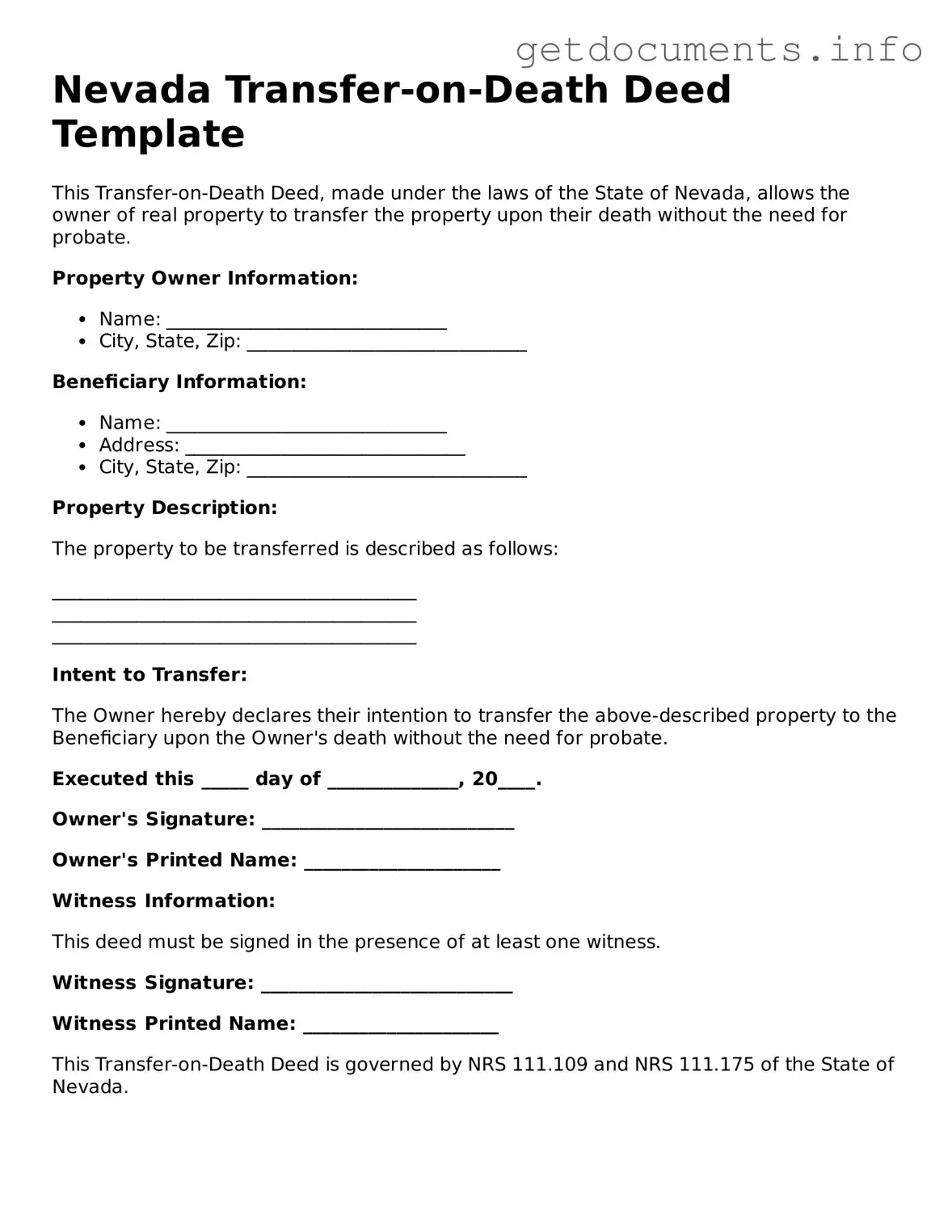Free Transfer-on-Death Deed Template for Nevada
The Nevada Transfer-on-Death Deed form allows property owners to designate beneficiaries who will automatically receive their property upon their death, without going through the lengthy probate process. This straightforward legal tool provides peace of mind and ensures that your wishes are honored after you're gone. If you're ready to simplify your estate planning, consider filling out the form by clicking the button below.
Access Transfer-on-Death Deed Editor
